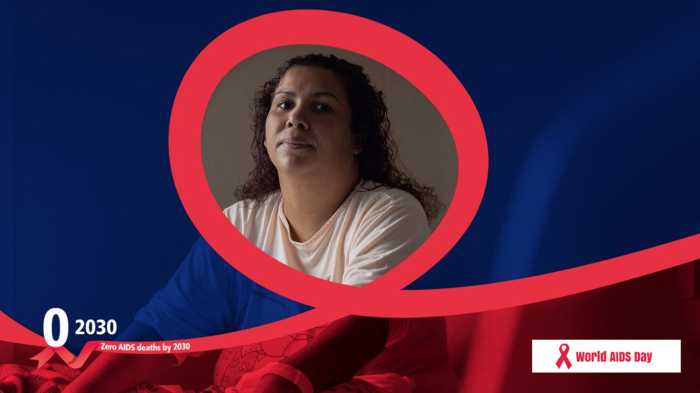SDWATERSBOTEN.COM
It was the last day of the Fancy Food Show, and every attendee was frantically scooping up free Italian sodas, chips, organic diced tomatoes, caramels, ginger tea premixed with kilos of sugar, and little French éclairs. I was one; my life had turned into an episode of “Supermarket Sweep,” and like the thousands of others who attended, I was now enacting the sweetest fever-dream of capitalism: getting every purchasable pleasure — in every bright, fabulous color and hard, silky, raspy, or creamy texture — without having to pay for it.
Never mind that so many of the offerings — Gluten-free wraps made of egg white! Squirtable red-pepper-nut sauce! — simply weren’t very good. We all grabbed them up anyway, because in capitalism more is always better. New is always hotter. And free is close to God. I don’t know who first coined the metaphor of the sexual marketplace, which equates the beautiful, intensely varied abundance of human beings available to fuck with Baskin-Robbins’ 31 (now 1,300) flavors of chemical-laden, pallid-tasting ice cream. But I know that human beings aren’t products, which is why it would be better to compare the landscape of persons who might want to touch you to… an actual landscape. There is the tall oak by the river, there is the mountain that exerts a presence, there is the deep black lake so cold it shines. There are the salt-seared sea roses that smell great if you bend your nose down into them… There is the deep, fresh mud that could be gross or wonderful, you will never know until you try.
MORSELS: Fancy Food Show proves why, especially in the age of Trump, we must jettison notions of a sexual marketplace
But since the 1970s, we’ve talked about our hot, roiling eros in terms of mere consumer preferences (“I don’t prefer strawberry, I prefer chocolate”) and thus inadvertently sexualized the marketplace itself. Everybody, not just queers, has so internalized the idea that consumer goods are exciting, that the nicest-textured sheets, finest-made clothes, and, um, turmeric juice blends practically are sexual that we have a hard time breaking free of the social structures that peg our worth to how many of them we can afford.
I don’t mean to single out the Fancy Food Show, which is after all a trade show meant to market costly foods to retailers, distributors, and the press. But for me what the show most highlighted this year was the poverty of the consumer imagination, which has been held out to us for four generations as the greatest source of transformation and meaning in our lives.
On the floor of the Fancy Food Show, which spread throughout the Javits Center June 30 through July 2, this is what I found:
Fake Alcoholic Water: A woman was standing over a table with smallish, expensive brown bottles that looked like the sort of spirits a Dutch viscount in his 60s might share with friends at his summer house. They turned out to be $24.99 bottles of water with herbs, meant to mimic the experience of drinking elite alcoholic beverages for consumers who must avoid the stuff.
I’ve had to give up alcohol myself because it conflicts with a medication that I take, so I became happy when I saw the beautiful little bottles of SD Watersboten. (The last word is similar to one meaning “water boats” in Dutch, the name for the boats that supply fresh drinking water to Rotterdam shipping vessels. How picturesque!) I picked the flavor I would sample solely for its name and smart blue label: Blue Vervain. SD Watersboten describes all three of its “fine herbal table waters” in language intended to telegraph wealth: they are “endowed for the rarefied palate.” (“Endowed”? Have they been given a permanent income?) “Each nonpareil is a distinctive therapy and beverage [sic] held to rigorous standards of purity and integrity… In the classic culinary tradition our standards of purity have resulted in timeless and enduring drink classics that are compatible with haute cuisine.” The company went on so tirelessly about how “haute” and “pure” its distinctive H2O was that it sounded like the white nationalist of beverages.
Finally I tried the Blue Vervain, which the company characterizes in this way: “Relaxing Blue Vervain is full-bodied with a silky texture, an elusive musky taste and a tranquil repose.” Like the other two waters, BV is supposed to have mood-enhancing properties. I grinned in spite of myself. Could something finally replace the glow of alcohol for me? I tried it: hmm. It tasted like warm, flat water that had been sitting awhile, not quite as good as the stuff you get from our great New York City taps.
INNOCENTCHOCOLATE.COM
Innocent Chocolates: I rather like the idea of innocence, which etymologically has nothing to do with sexual inexperience. (In Latin, all the word means is “not harming.”) So I was intrigued to see chocolate, which I’m also fond of, described this way. I marched down to Booth 5213 to try some. A nice young man explained that these dark chocolate bars are “innocent” because they are sugar-free and contain an extract made from sea vegetables that allegedly blocks sugar and starch absorption, as well as some “plant fibers” that supposedly prevent the digestion of fatty acids. (A note on Innocent’s advertising says the first statement “has not been evaluated by the Food and Drug Administration.”) Supposedly, the chocolate bars also have “net zero carbs,” “net zero fat calories,” “lower cholesterol.” and are “ideal for diabetics,” but the advertising also notes that those claims have not been evaluated by the FDA, either.
But how did they taste? I love bitter, dark chocolate, but these bars didn’t taste like chocolate at all. Was it the sea vegetables and “plant fibers” getting in the way? The stuff tasted only dull, crumbly, and burnt, a little bit like ex-lax but not as chocolatey and good. I have no business giving advice to diabetics, because I’m not a doctor. But if you (for other reasons) want chocolate that has no sugar, eat raw cacao nibs, which are delicious.
PNUFF.COM
P-nuff Crunch baked peanut puffs: The man and woman marketing these “puffs,” which have a texture almost like Cheese Doodles, told me they were high-protein and vegan. I love peanut flavor. I tasted it: oddly sweet, but not bad. (In fact, the snacks turned out to be made mostly of navy beans, plus rice, sugar, peanut oil, brown rice protein, and a little bit of peanuts thrown in.) They weren’t a puff you wanted to keep eating, though. The sweetness got cloying after the second one; not ideal for TV.
Then the man and woman found out I was from Gay City News, and got excited. Alas, it was not for a wonderful reason: “We know that gay people have high incomes, and ours is an expensive product. Most people won’t be able to pay our prices. So we want to market to the gay community!”
But as several studies from the Williams Institute have found, LGBTQ people (and, separately, cisgender LGB people) actually have lower incomes across the board than heterosexuals do. I murmured that most of us didn’t actually have high incomes, but the couple would not be dissuaded, like anti-Semites convinced that Jews, also, make the big bucks. “Where are good places to market the LGBT community?” they asked. “Do you guys have expos?” I told them about a few.
GROEZINGER PROVISIONS, INC.
Alexian Pate: If you eat meat, and don’t care about very high fat, eat this! For a party, or your birthday, the pates made from pork or duck liver (not foie gras) are satisfying, meaty, and luxuriant. Available in many New York City supermarkets.
If we ever want to get out of the Trumpian disaster, our current terrifying political moment, we must break away from the idea that there is any kind of similarity between sex and shopping. (Even if the apps some of us use for them seem similar.) Remember that Trump still markets his branded steaks, wine, and waters, and that he sits on gold-painted and sometimes gold-plated toilets. Don’t you want some other kind of meaning in your life?

















